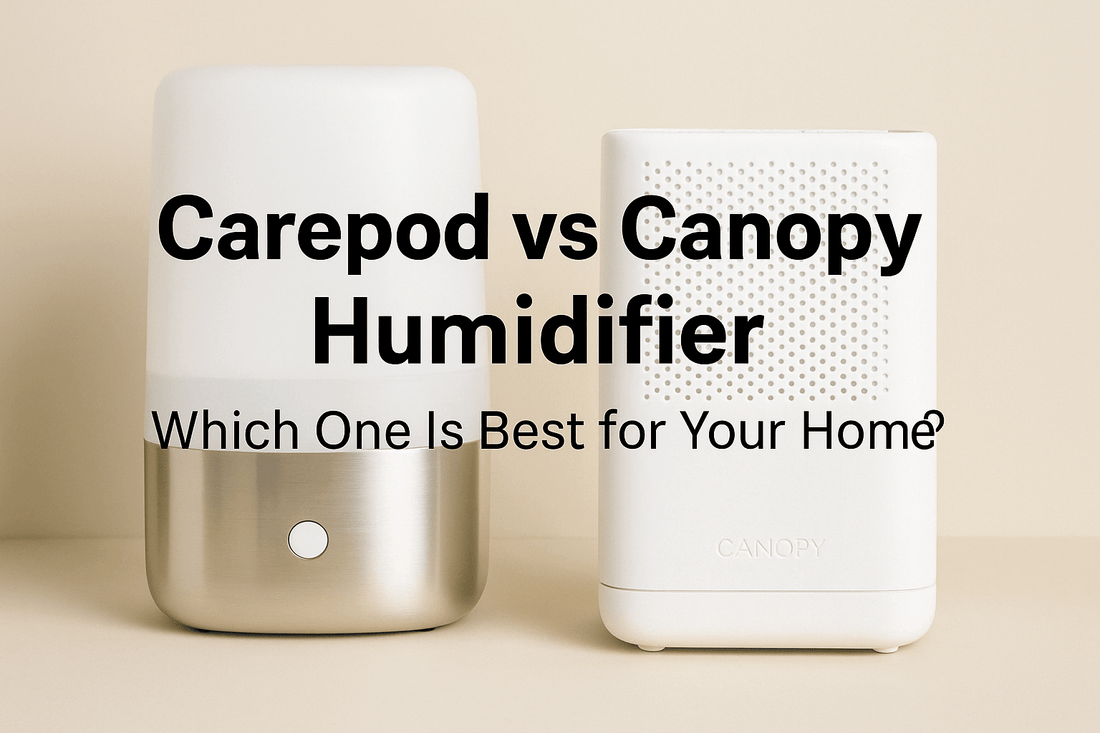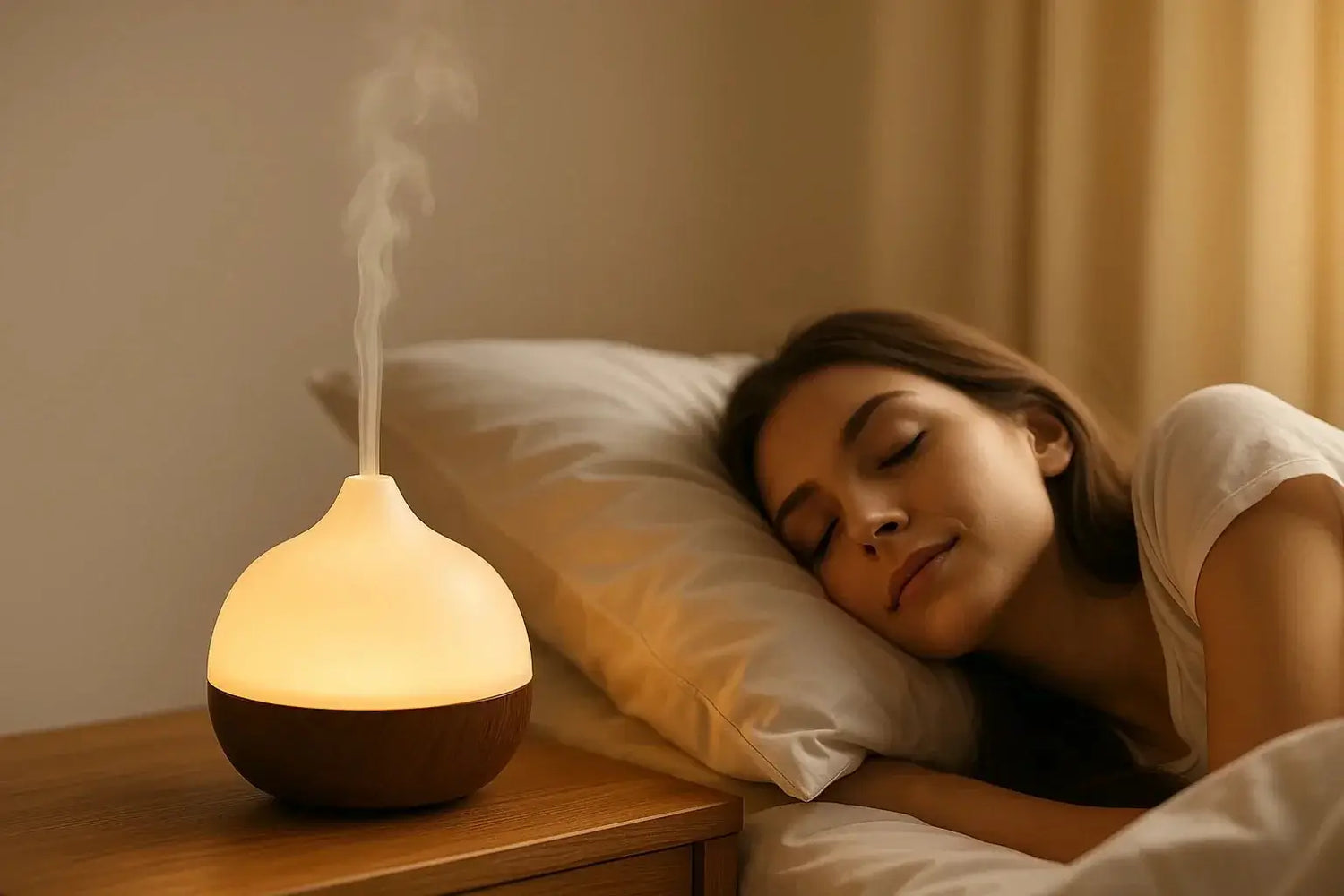
QuietAura vs Canopy vs Carepod: Which Night Device Actually Helps You Sleep?
Share
QuietAura vs Canopy vs Carepod
Night after night, the same cycle: dry air, racing thoughts, harsh blue light. You want more than vibes—you want results. This guide cuts through the noise: diffuser vs humidifier, what’s compatible with essential oils, and which device fits your exact bedtime issue. No fluff, just a straight line to deeper sleep.
TL;DR
If your room air is dry (winter, A/C) → a humidifier helps you breathe and sleep.
If scent calms your nervous system → a diffuser with sleep oils (lavender, chamomile) is the move.
Want aroma and hands-free use? → QuietAura Smart Aromatherapy Diffuser (motion-sensor, auto on/off) is the fastest win.
Quick pick: QuietAura Smart Aromatherapy Diffuser – Motion Sensor
Diffuser vs Humidifier (2-minute clarity)
-
Diffuser = disperses essential oils in tiny amounts of mist for relaxation cues. Great for mood/sleep routines.
-
Humidifier = adds moisture to air to reduce dryness, scratchy throat, congestion, static. Great in cold/dry climates or A/C rooms.
-
Some humidifiers allow aroma accessories; others do not recommend oils inside the tank. Always follow the brand’s guidance.
The Matchup
| Brand / Device | Core Type | Essential Oils | Primary Goal | Night Use | Upkeep | Best For |
|---|---|---|---|---|---|---|
| QuietAura Smart Aromatherapy Diffuser | Diffuser (+ light humidifying mist) | Designed for oils | Calm the nervous system with sleep blends | Motion-sensor auto; low-noise | Simple wipe/clean | Overthinkers, scent-responsive sleepers |
| Canopy (Aroma Diffuser / Humidifier family) | Diffuser or Humidifier (model dependent) | Aroma accessories available on specific models | Moisture + optional aroma via wells/pucks | Bedroom-safe, filter options on humidifier models | Filter changes (humidifier), cleaning | Dry climate, skin comfort, light aroma |
| Carepod (One / Cube Plus) | Humidifier | Oils not recommended in tank | Clean moisture; stainless steel tank | Quiet; sterilizable parts | Dishwasher-safe steel tank; boil to sterilize | Families, ultra-clean maintenance |
Note: If deep sleep is triggered by smell (lavender, chamomile), choose a diffuser-first device. If your issue is dry air / congestion, choose a humidifier-first device.
When QuietAura Wins (and why)
Hands-free bedtime: Motion sensor turns on with movement and idles when the room is still—ideal for late-night trips.
Sleep-first design: Built for essential oils; you get immediate scent cues that signal “wind down” to your brain.
Quick setup, no fuss: Simple cleaning; no filters to chase.
Try it now → QuietAura Smart Aromatherapy Diffuser – Free U.S. Shipping
When a Humidifier Wins (Canopy or Carepod)
Dry air / winter noses: If you wake with dry mouth or a scratchy throat, moisture is the fix.
Sensitive skin / eczema: A stable bedroom humidity (40–50%) helps skin barrier function.
Cleaning priorities: If you want sterilizable hardware, Carepod’s stainless tank is a plus. If you want filter-based, low-mist humidification, Canopy has options.
Pro tip: For many bedrooms, the best setup is humidifier + diffuser: moisture for airways, aroma for the nervous system.
Simple Decision Tree
Do you feel dry air symptoms (dry nose, throat, static hair)? → Start with humidifier.
Is scent the thing that calms you (lavender, chamomile)? → Start with diffuser.
Want hands-free + oils? → QuietAura diffuser.
One-tap move: Add QuietAura to bedtime routine
Set-Up for a Calm Night (5-minute routine)
60–90 minutes before bed, dim lights.
Add water + 3–6 drops of sleep oil to your diffuser.
Set the unit near your bedside (not directly under AC).
Phone face down; no doomscrolling after this point.
4-7-8 breathing for one minute.
Let the aroma do the rest.
Want oil ideas? See: Best Smart Sleep Diffuser & Oils (2025)
Sleep easier this week. Pay with PayPal Buyer Protection.
👉 QuietAura Smart Aromatherapy Diffuser
FAQs
Is a humidifier or diffuser better for sleep?
If your air is dry, a humidifier helps breathing and skin. If your brain relaxes with scent cues, a diffuser is powerful. Many people use both.
Can I put essential oils in any humidifier?
No. Some brands explicitly discourage it to protect components. Always follow each brand’s guidance.
How many drops of oil should I use?
Start with 3–6 drops; adjust by room size and sensitivity.
Where should I place the device?
Near your bed but not directly under airflow from AC/heater. Keep on a stable, water-safe surface.





